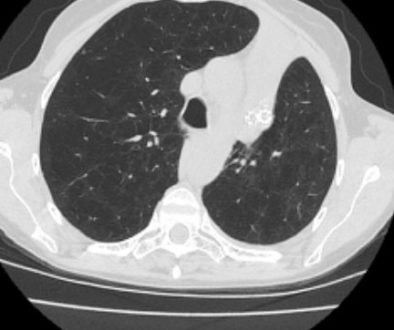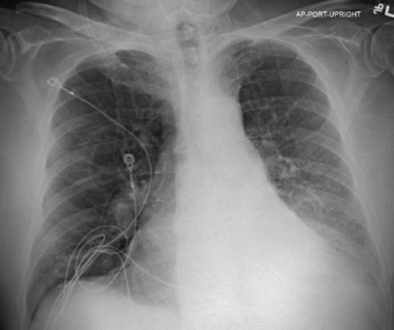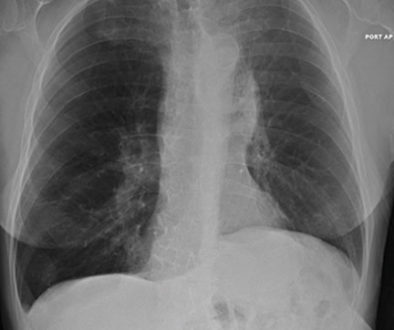Clinical Spotlight:
55-year-old woman with almost 2L decrease in residual volume and a doubling of FEV1 (lung function)
| Patient Profile | |
|---|---|
| Quality of Life Goal | Wants to have less anxiety, be able to do daily activities easier, and work in the garden |
| Condition |
|
| Smoking History |
|
| Management Medications |
|
| Oxygen Use |
|
| Baseline FEV1 |
|
| Symptoms |
|
| Special Notes |
|
Procedure Details:
-
Pulmonary rehab prior to treatment
-
StratX® Reportshowed 90% fissure on the left and 45% destruction at -910 HU in the target lobe (Left Lower Lobe), with lobar inspiratory volume of 1429 mL
-
Collateral ventilation negative Chartis® System
-
Four Zephyr Valves placed in left lower lobe (LLL)
-
Patient tolerated the procedure well, no pneumothorax
-
Five-night hospitalization prior to discharge
Pre and Post-Imaging:
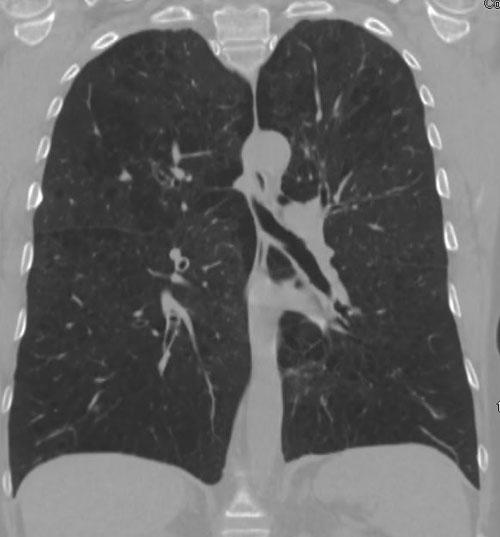
Pre-procedure
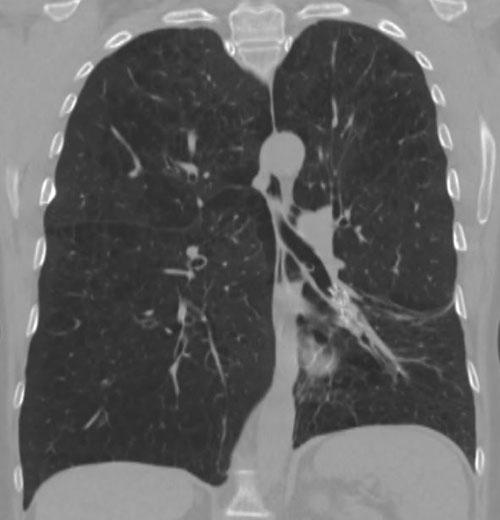
Post-procedure
Pre and Post Lung Function Chart:
| ASSESSMENT | PRE-PROCEDURE | POST-PROCEDURE (3 MONTHS) |
|---|---|---|
| FEV1 | 580 mL | 900 mL |
| FEV1 (% pred) | 20% | 31% |
| RV | 5430 mL | 3680 mL |
| RV (% pred) | 257% | 173% |
| TLC | 7910 mL | 6790 mL |
| TLC (% pred) | 138% | 118% |
| 6MWD | 320 m | 355 m |
Case was Completed by:
Dr. Deepankar Sharma at Columbus Regional Health, IN
Patient was Referred by:
Dr. Salim S. Abou-Jaoude, Pulmonologist in Lafayette, IN
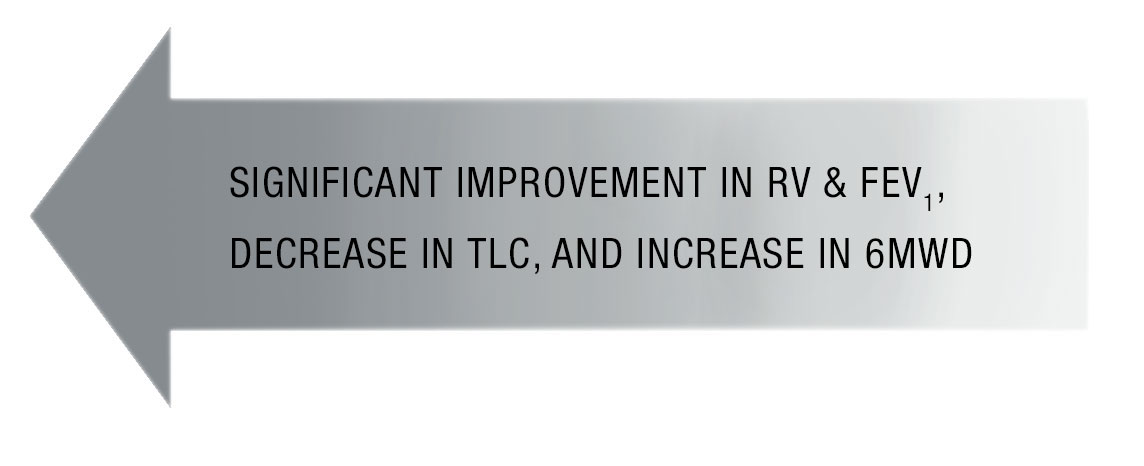
Patient Outcome:
-
Decreased oxygen usage: Changed from continuous oxygen use to as needed
-
Disease symptoms are more controlled
-
No hospitalizations since treatment
-
Achieved quality of life improvement goals
- Less anxiety and able to do daily activities easier
How the Zephyr Valve Works:
The Zephyr Valve is a one-way valve designed to reduce hyperinflation of the lungs caused by severe emphysema/COPD. In a minimally invasive bronchoscopic procedure, an average of four tiny valves are placed in the airways to block off the diseased parts of the lungs where air gets trapped, causing hyperinflation and severe shortness of breath. The Zephyr Valve reduces lung hyperinflation by allowing trapped air to escape and preventing new air from entering that diseased lobe. This allows the healthier parts of the lung to function better and results in patients being able to breathe more easily and experience less shortness of breath.¹
The Zephyr Endobronchial Valve is removable, and thus preserves future therapy options.
If you have a patient to refer, find a treatment center in your area.
Zephyr Valve Patient Benefits and Risks:
Patients treated report significant improvements in lung function, exercise tolerance, and quality of life.1
Complications of the Zephyr Endobronchial Valve treatment can include but are not limited to pneumothorax, worsening of COPD symptoms, hemoptysis, pneumonia, dyspnea and, in rare cases, death.
Results from clinical spotlights are not necessarily predictive of results in other cases. Results in other cases may vary.

